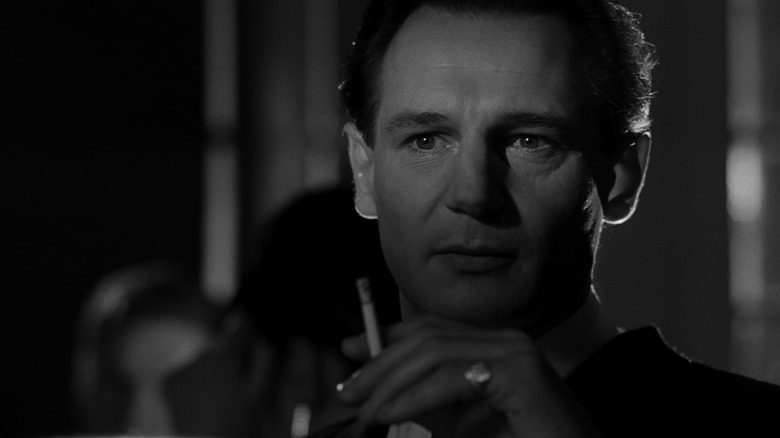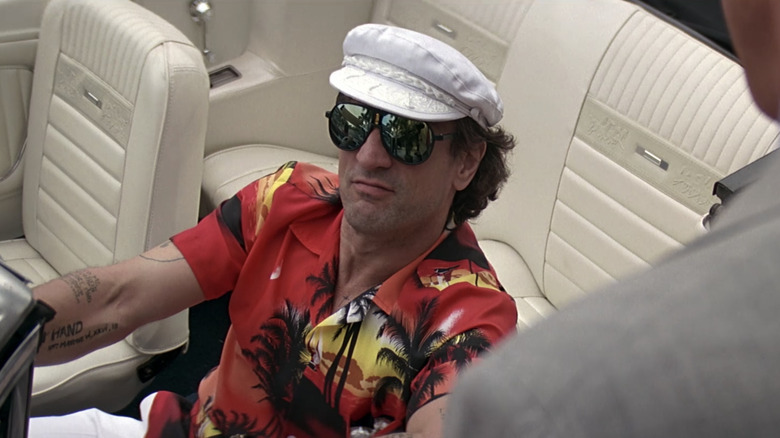Why Spielberg Traded Cape Fear To Scorsese For Schindler's List
"Schindler's List" won Steven Spielberg his first Academy Award for Best Director, and it's hard to imagine anyone else helming the film. "Cape Fear" is a little different in that Martin Scorsese's 1991 version is a remake of a 1962 thriller directed by J. Lee Thompson. Scorsese reused the score by Bernard Herrmann and reused actors like Robert Mitchum and Gregory Peck. We don't have to imagine what it would be like for someone other than him to helm "Cape Fear," because someone else already did.
However, if things had gone differently, we could have seen Scorsese direct "Schindler's List" and Spielberg tackle the "Cape Fear" remake. Both films were distributed by Universal Pictures and co-produced by Amblin Entertainment. Spielberg did remain attached to "Cape Fear" as an uncredited executive producer, but according to Far Out, he was originally developing the project himself back in the late 1980s.
The surprising thing is he wanted Bill Murray to star as Max Cady, the convicted rapist who starts terrorizing his former lawyer and his family after he gets out of prison. Of course, the role ultimately went to Robert De Niro, and it's hard to imagine Murray covered in tattoos, quoting scripture in a Southern accent, and biting a woman's cheek off like De Niro's character.
Needless to say, this kind of dark subject matter would have made a strange follow-up to Spielberg's previous film, "Indiana Jones and the Last Crusade," which is part of the reason why he passed the project off to Scorsese. Spielberg explained:
"I wasn't in the mood; it's as simple as that...I just couldn't find it inside me to make a scary movie about a family being preyed on by a maniac."
Alternate Casting
In "Cape Fear," Nick Nolte plays Sam Bowden, the morally compromised lawyer (or "counselor," as Cady always calls him). However, even if Spielberg wasn't going to direct the film himself, Scorsese was still interested in having his "Indiana Jones" star, Harrison Ford, play Bowden.
Ford had other ideas. He was looking to stretch himself as an actor and play an unheroic character, as he did in "The Mosquito Coast." That's why he was vying for the Cady role. Nolte kept pushing to play Bowden and finally won himself the part.
Meanwhile, De Niro, an actor known for his physical dedication to his roles (he put on sixty pounds for his iconic performance in Scorsese's "Raging Bull"), had a dentist grind down his teeth so he could give Cady a rougher physiognomy. Years later, Brad Pitt would take a page from the Robert De Niro school of dentistry for his role as Tyler Durden in "Fight Club."
As for "Schindler's List," before Spielberg committed to directing it himself, he sought out numerous other filmmakers, including Roman Polanksi, whose mother died in Auschwitz and who would eventually direct his own Holocaust drama, "The Pianist." The most serious candidate for Spielberg was Scorsese, who wound up backing away from the project because of the controversy he had endured with his 1988 film, "The Last Temptation of Christ."
Spielberg was spurred on to take over the film himself when he observed the platforming of Holocaust denialism after the fall of the Berlin Wall in 1989. "Schindler's List" would become one of his most personal projects and one of the 20th century's greatest films, so there was no better person for the job for him. The same could be said for Scorsese and his "Cape Fear" remake.

